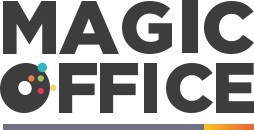
Understanding Category Management in the UAE Context
Comprehending the Unique Landscape of Category Management in the Middle East
Positioned as a dynamic business hub, the UAE presents a unique environment for category management where local customs and global business intersections create fascinating challenges and opportunities. Understanding this context is pivotal for office managers tasked with managing procurement processes and strategic sourcing effectively. In the UAE, category management is not only about grouping products and services into categories for more streamlined procurement; it's also about aligning these categories with the company's overarching business strategies and objectives. This alignment ensures that spend management is both effective and efficient, leveraging strategic sourcing to enhance cost savings and supplier relationships. The region’s market analysis often reveals disparities between local and international supplier capabilities, requiring a keen strategic eye on supplier performance. Office managers need to engage in thorough data analysis to evaluate supplier offerings and performance. This practice aids in refining supply chain management strategies that align with the UAE’s unique business landscape. Moreover, the supply chain dynamics in the area are subject to rapid changes due to geopolitical developments and shifting economic conditions. This places an added emphasis on a flexible and adaptive management strategy that can respond to the variability in category strategies. Long-term, sustainable relationships with suppliers are essential, ensuring continuity and reliability in procurement operations. When we look at successful category management, it’s about deploying strategies that reflect both immediate tactical needs and long-term strategic goals focused on improving the procurement category. For more on integrating these strategies effectively, consider exploring the project management domains in Arabian Emirate companies for added insights.Identifying Key Challenges for Office Managers
Navigating the Complexity of Office Management
Office managers in the UAE face a unique set of challenges when engaging in category management, due to the dynamic and competitive business environment. Understanding these challenges is essential to developing effective strategies that meet specific organizational needs. Here are some key considerations:
- Diverse Market Dynamics: The UAE's market is a melting pot of cultures and industries. This diversity requires office managers to thoroughly understand market trends, ensuring that their procurement strategies align with regional characteristics and expectations.
- Cost Management and Budget Constraints: Managing spend efficiently while maintaining high-quality standards is a constant challenge. Identifying opportunities for cost savings without compromising service delivery is crucial for long-term success.
- Sourcing and Supplier Issues: The ability to build strong supplier relationships and ensure supplier performance is vital. Suppliers are key partners in the supply chain, and maintaining a network of reliable contacts who provide quality goods and services is essential.
- Data-Driven Decision Making: Leveraging data and analysis is necessary for informed decision-making. Performance metrics and accurate data are central to refining processes and enhancing overall procurement strategy.
Taking these challenges into account can help office managers in the UAE create a robust category management strategy that not only meets organizational goals but also adapts to the ever-changing business landscape. For a deeper understanding of how to refine your approach and policy within the context of remote work, refer to a detailed exploration of these considerations.
Tailoring Strategies for Effective Category Management
Customizing Action Plans for Optimal Results
Crafting a management strategy that aligns with the unique business environment of the UAE is crucial for success. Office managers need to address the complexities of category management by developing a tailored procurement strategy. It involves understanding the diverse procurement category requirements specific to their organization and optimizing the supply chain for cost efficiency and quality performance.
Office managers should aim to create actionable category strategies to effectively manage and streamline their procurement processes. Here are some essential steps:
- Comprehensive Category Analysis: Analyze all categories including goods services, and products services. Evaluate your current spend, supplier performance, and market trends to formulate a robust category strategy.
- Strategic Sourcing: Develop a sourcing category and strategic sourcing plan by conducting a detailed analysis of supply markets. Identify potential cost savings by evaluating offers from various suppliers, thereby ensuring price competitiveness and product quality.
- Integrating Supplier Management: Foster strong supplier relationships by establishing mutually beneficial partnerships. Effective supplier relationship management can lead to better negotiations, increased service levels, and a more reliable supply chain.
- Implementing Best Practices: Use industry best practices in procurement to enhance sourcing and management processes. Regularly review and adapt management procurement tactics to keep pace with changes in the business environment.
By customizing strategies to meet local market needs, office managers can achieve long-term cost savings and improve the efficiency of their category management efforts. This strategic alignment not only supports operational goals but also enhances overall business performance.
Leveraging Technology for Enhanced Management
Embracing Technological Tools for Efficient Category Management
The modern workplace is rapidly evolving, and technology plays a pivotal role in shaping a more efficient category management approach for office managers. The use of advanced technological tools and software can help streamline procurement processes, foster improved supplier relationships, and enhance overall management strategies.
One of the core aspects of leveraging technology in category management is the ability to perform comprehensive data analysis. By utilizing cost analysis software and procurement data platforms, office managers can gain insights into their spending patterns, identify saving opportunities, and optimize their budgets more effectively. Such tools facilitate strategic sourcing by providing visibility into market trends and supplier performance metrics, supporting well-informed decision-making processes.
Technological advancements also enable the automation of several procurement tasks. This can significantly reduce the administrative burden on office managers, allowing them to focus on strategic aspects such as sourcing categories and developing long-term strategies for goods and services. Moreover, automation minimizes the margins for human error, ensuring a more accurate and reliable process.
It's important to consider supply chain management strategies that integrate advanced logistical software. These systems help track products and services throughout the supply chain, ensuring timely deliveries and efficient inventory management. By having a real-time overview of the supply chain, office managers are better equipped to handle disruptions and adapt their strategies swiftly, ensuring continuous performance improvement.
While technology is a powerful ally in category management, it is crucial for office managers to keep up with the rapidly changing technological landscape. Regular training sessions and workshops can be beneficial in equipping teams with the skills needed to harness these tools effectively.
Building Strong Supplier Relationships
Fostering Robust Supplier Partnerships
Building strong supplier relationships is a cornerstone of effective category management. In the UAE's dynamic business landscape, office managers must prioritize strategic partnerships to optimize procurement processes and drive cost savings. Establishing a collaborative approach with suppliers can enhance the supply chain and ensure a steady flow of goods and services.
Here are some best practices for cultivating these vital connections:
- Regular Communication: Maintain open lines of communication with suppliers to address any issues promptly and foster mutual understanding. This can lead to improved supplier performance and a more resilient supply chain.
- Performance Analysis: Conduct regular performance reviews to evaluate supplier contributions to your category strategy. Use data-driven insights to identify areas for improvement and recognize high-performing suppliers.
- Long-term Collaboration: Focus on long-term partnerships rather than short-term gains. This strategic approach can lead to better negotiation outcomes and more favorable terms in your procurement strategy.
- Market Insights: Leverage supplier expertise to gain valuable market insights. This can inform your sourcing category decisions and enhance your overall management strategy.
By implementing these strategies, office managers can ensure that their supplier relationships contribute positively to their category management goals. This not only supports effective procurement but also aligns with broader business objectives, ultimately leading to sustained success in the competitive UAE market.
Measuring Success and Continuous Improvement
Measuring Performance and Seeking Improvement
To ensure success in your category management endeavors as an Office Manager in the UAE, it is pivotal to establish robust metrics to measure performance accurately. Understanding the procurement strategy involves assessing the cost of goods and services and analyzing supplier performance. This analysis helps in identifying areas where cost savings can be achieved and emphasizes the importance of strategic sourcing.
By employing effective category strategies, Office Managers can optimize their spend in various procurement categories. Monitoring the results of your sourcing decisions is essential, enabling you to track progress against business objectives and adapt your management strategy as necessary.
Consider the following aspects to help you gauge the efficacy of your strategies:
- Evaluate supplier performance through regular assessments, ensuring they meet your organization’s quality standards and compliance requirements.
- Measure spend against budget projections to identify any deviations and implement necessary corrective measures.
- Analyze supplier relationships to assess their contribution to the supply chain's resilience and efficiency.
- Utilize data-driven insights to enhance procurement management and refine category strategies for long-term success.
Once you've established a systematic process for performance measurement, seeking continuous improvement should be a priority. Leveraging the insights gathered from performance data positions you to make informed decisions and refine your category management approach effectively.













